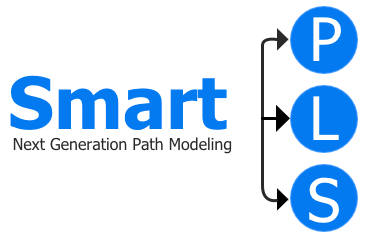CB-SEM Multi-Group Analysis (MGA) & Measurement Invariance
Abstract
Multigroup analysis (MGA) in covariance-based SEM (CB-SEM) is used to test whether a specified model holds equivalently across different groups (e.g., male vs. female, experimental vs. control). It allows researchers to assess the stability of relationships between constructs and compare parameter estimates across subpopulations (Hair et al., 2018). A requirement the the MGA is measurment model assessment (Vandenberg, 2000), which SmartPLS also supports for CB-SEM. More specifically, SmartPLS extends its CB-SEM functionality by providing:
- CB-SEM Multi-Group Analysis (MGA): Estimation of a single SEM across predefined groups with optional cross-group constraints.
- Measurement Invariance Testing: A systematic procedure to evaluate whether constructs are measured equivalently across groups by imposing progressively stricter equality constraints.
This enables researchers to test measurement invariance and structural differences between groups directly within SmartPLS.
Multi-Group Analysis in SmartPLS
Groups
Users specify the groups for which CB-SEM MGA will be performed (e.g., gender, region, treatment). SmartPLS estimates the same model separately for each group, while allowing for cross-group constraints to be imposed.
Constraints
Parameter constraints can be specified to:
- Fix values: e.g., fix a loading to 1 for scale identification.
- Apply equality constraints: force two or more parameters to share the same value (e.g., equal loadings or paths).
- Apply across-group constraints: constrain parameters to be equal across all groups for invariance testing.
Measurement Invariance Testing
SmartPLS provides a structured framework for assessing measurement invariance by comparing nested models with increasing constraints:
Invariance Test Setup
Available predefined group-model constraints:
- Configural invariance: No across-group constraints; same model structure in each group, freely estimated.
- Weak (loading) invariance: All loadings constrained equal across groups.
- Strong (intercept) invariance: Loadings and intercepts constrained equal. Construct means fixed to zero in the first group, freely estimated in others.
- Strong (intercept + means) invariance: Loadings, intercepts, and construct means constrained equal across groups.
- Strict (residual) invariance: Loadings, intercepts, and indicator residual variances constrained equal across groups. Construct means fixed to zero in the first group, freely estimated in others.
- Strict (residual + means) invariance: Loadings, intercepts, residual variances, and construct means constrained equal across groups.
By default, MGA in SmartPLS uses the configural model without cross-group equality constraints, unless specified by the user.
Strict vs. Basic Invariance Testing
SmartPLS implements two standard invariance testing sequences:
Basic Sequence
- Configural model
- Weak (loading) invariance
3a. Strong (loading + intercept) invariance
3b. Strong (loading + intercept + means) invariance
Strict Sequence
- Configural model
- Weak (loading) invariance
3a. Strong (loading + intercept) invariance
4a. Strict (loading + intercept + residual variance) invariance
4b. Strict (loading + intercept + residual variance + means) invariance
In the strict sequence, Model 3b is skipped, as comparisons are made directly between Model 3a and Model 4a.
CB-SEM Examples in SmartPLS
SmartPLS provides directly computable CB-SEM multigroup analysis examples from leading textbooks (Hair et al., 2018). The results in SmartPLS replicate the textbook examples exactly. Try out the CB-SEM example projects in SmartPLS. Alternatively, you can run a CB-SEM moderator analysis.
References
- Hair, J. F., Black, W. C., Babin, B. J., & Anderson, R. E. (2018). Multivariate Data Analysis (8 ed.). Cengage Learning.
- Vandenberg, R. J., & Lance, C. E. (2000). A Review and Synthesis of the Measurement Invariance Literature. Organizational Research Methods, 3(1), 4–70.
- More literature ...
Cite correctly
Please always cite the use of SmartPLS!
Ringle, Christian M., Wende, Sven, & Becker, Jan-Michael. (2024). SmartPLS 4. Bönningstedt: SmartPLS. Retrieved from https://www.smartpls.com

